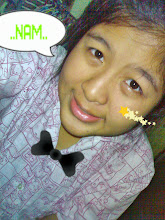
Eiffel Tower

The first and second levels are accessible by stairways and lifts. A ticket booth at the south tower base sells tickets to access the stairs which begin at that location. At the first platform the stairs continue up from the east tower and the third level summit is only accessible by lift. From the first or second platform the stairs are open for anyone to ascend or descend regardless of whether they have purchased a lift ticket or stair ticket. The actual count of stairs includes 9 steps to the ticket booth at the base, 328 steps to the first level, 340 steps to the second level and 18 steps to the lift platform on the second level. When exiting the lift at the third level there are 15 more steps to ascend to the upper observation platform. The step count is printed periodically on the side of the stairs to give an indication of progress of ascent. The majority of the ascent allows for an unhindered view of the area directly beneath and around the tower although some short stretches of the stairway are enclosed.
Maintenance of the tower includes applying 50 to 60 tonnes of paint every seven years to protect it from rust. In order to maintain a uniform appearance to an observer on the ground, three separate colors of paint are used on the tower, with the darkest on the bottom and the lightest at the top. On occasion the colour of the paint is changed; the tower is currently painted a shade of brownish-grey.[8] On the first floor there are interactive consoles hosting a poll for the colour to use for a future session of painting. The co-architects of the Eiffel Tower are Emile Nouguier, Maurice Koechlin and Stephen Sauvestre.[9]
Novelist Guy de Maupassant — who claimed to hate the tower — supposedly ate lunch in the Tower's restaurant every day. When asked why, he answered that it was the one place in Paris where one could not see the structure. Today, the Tower is widely considered to be a striking piece of structural art.
One of the great Hollywood movie clichés is that the view from a Parisian window always includes the tower. In reality, since zoning restrictions limit the height of most buildings in Paris to 7 stories, only a very few of the taller buildings have a clear view of the tower.
Eiffel had a permit for the tower to stand for 20 years, meaning it would have had to be dismantled in 1909, when its ownership would revert to the City of Paris. The City had planned to tear it down (part of the original contest rules for designing a tower was that it could be easily demolished) but as the tower proved valuable for communication purposes, it was allowed to remain after the expiration of the permit. The military used it to dispatch Parisian taxis to the front line during the First Battle of the Marne, and it therefore became a victory statue of that battle.









